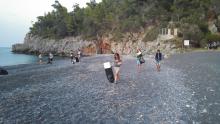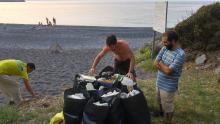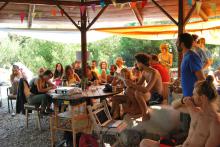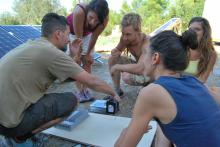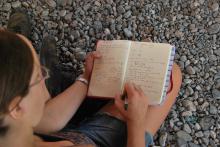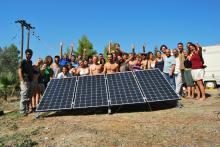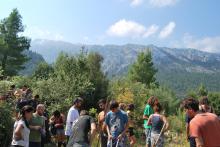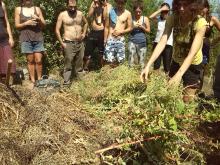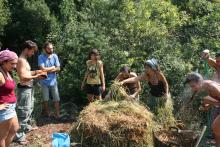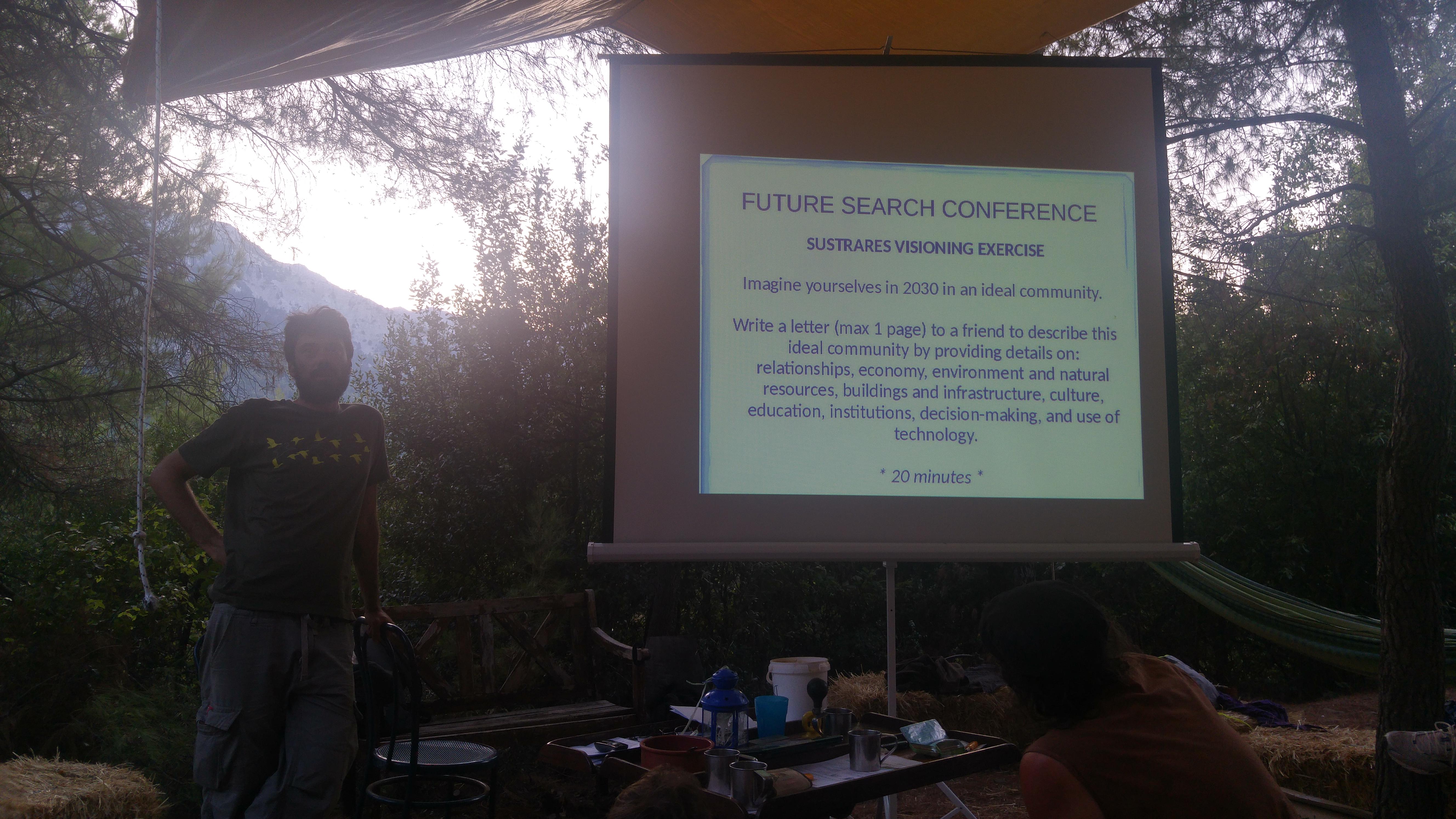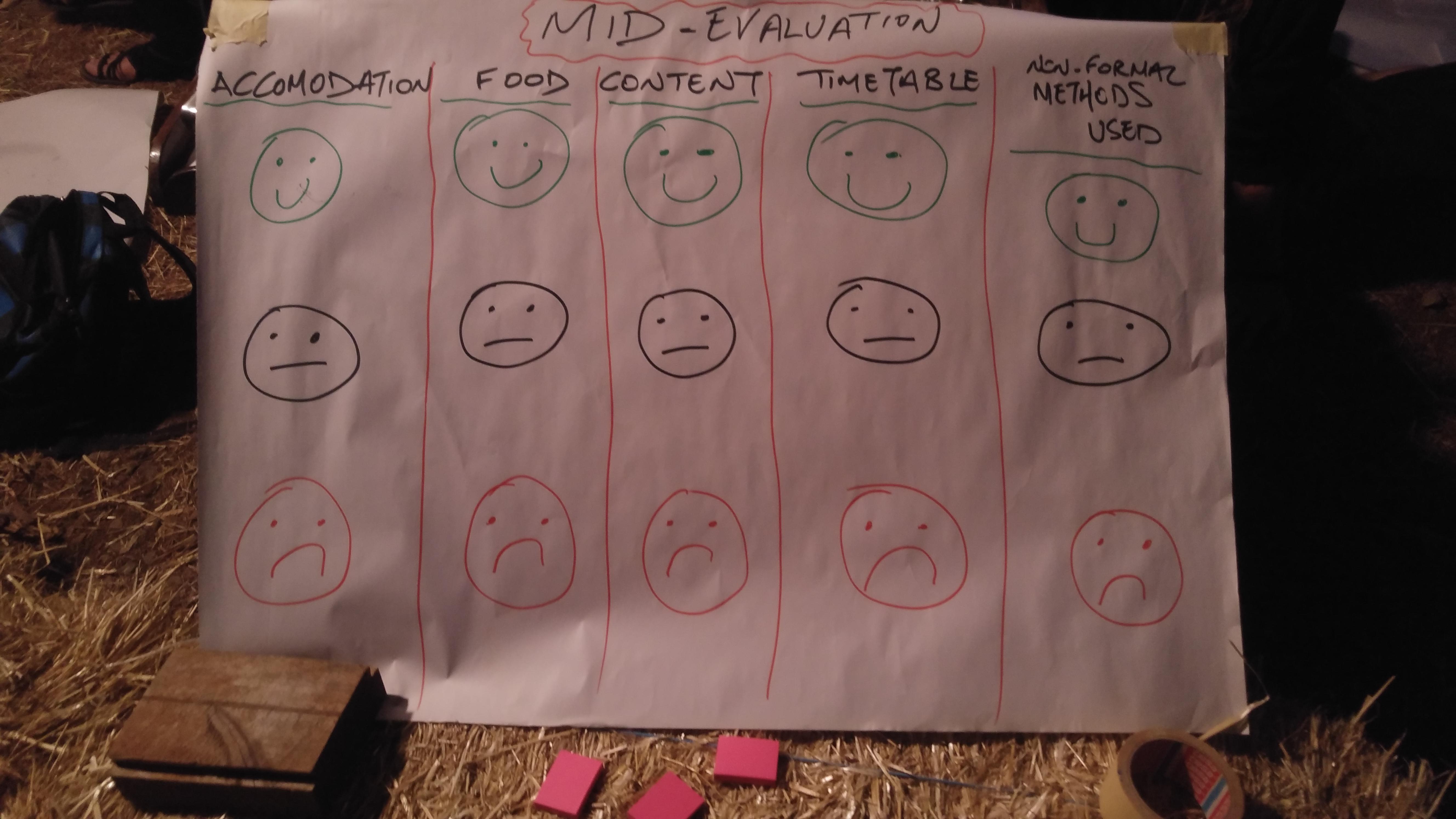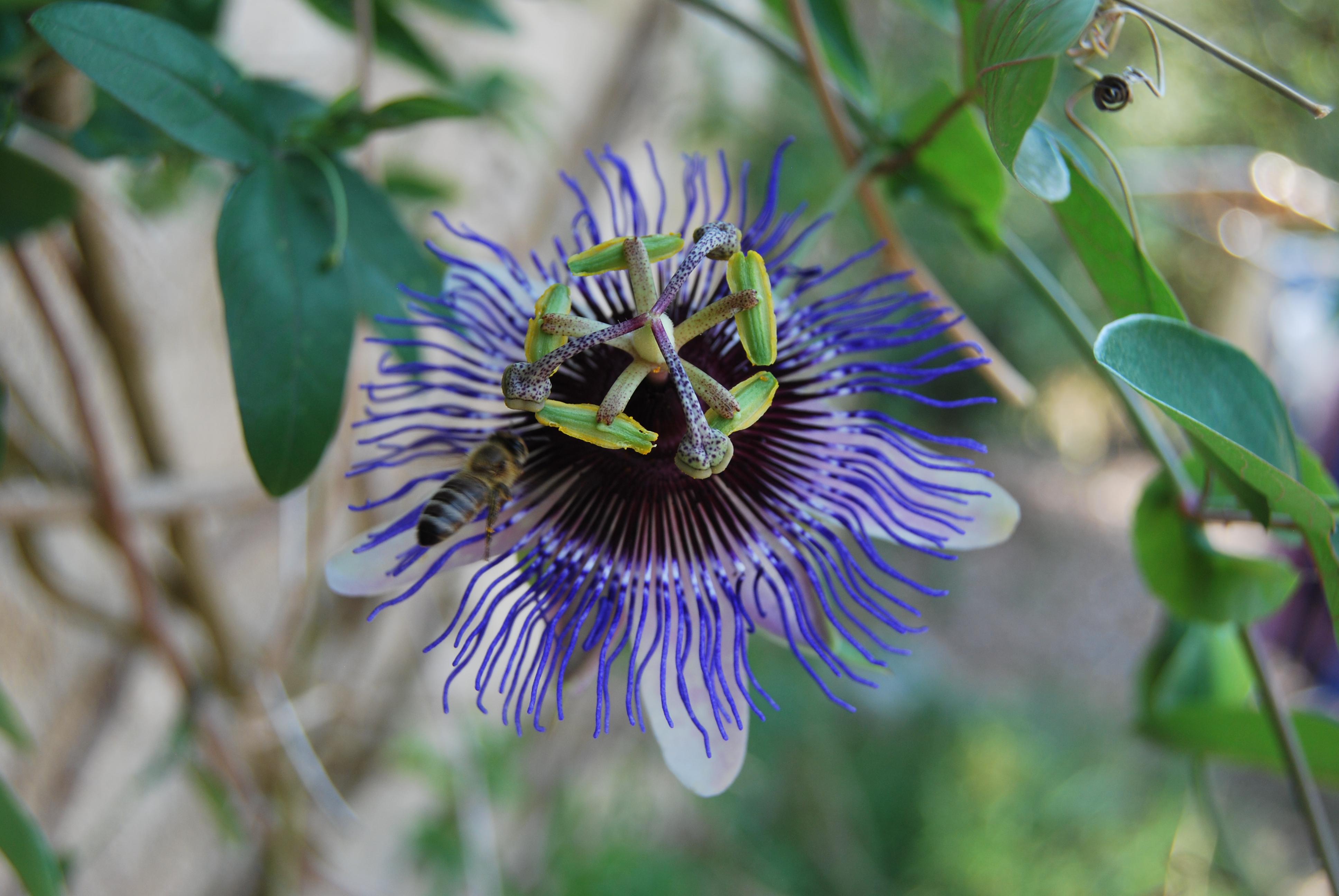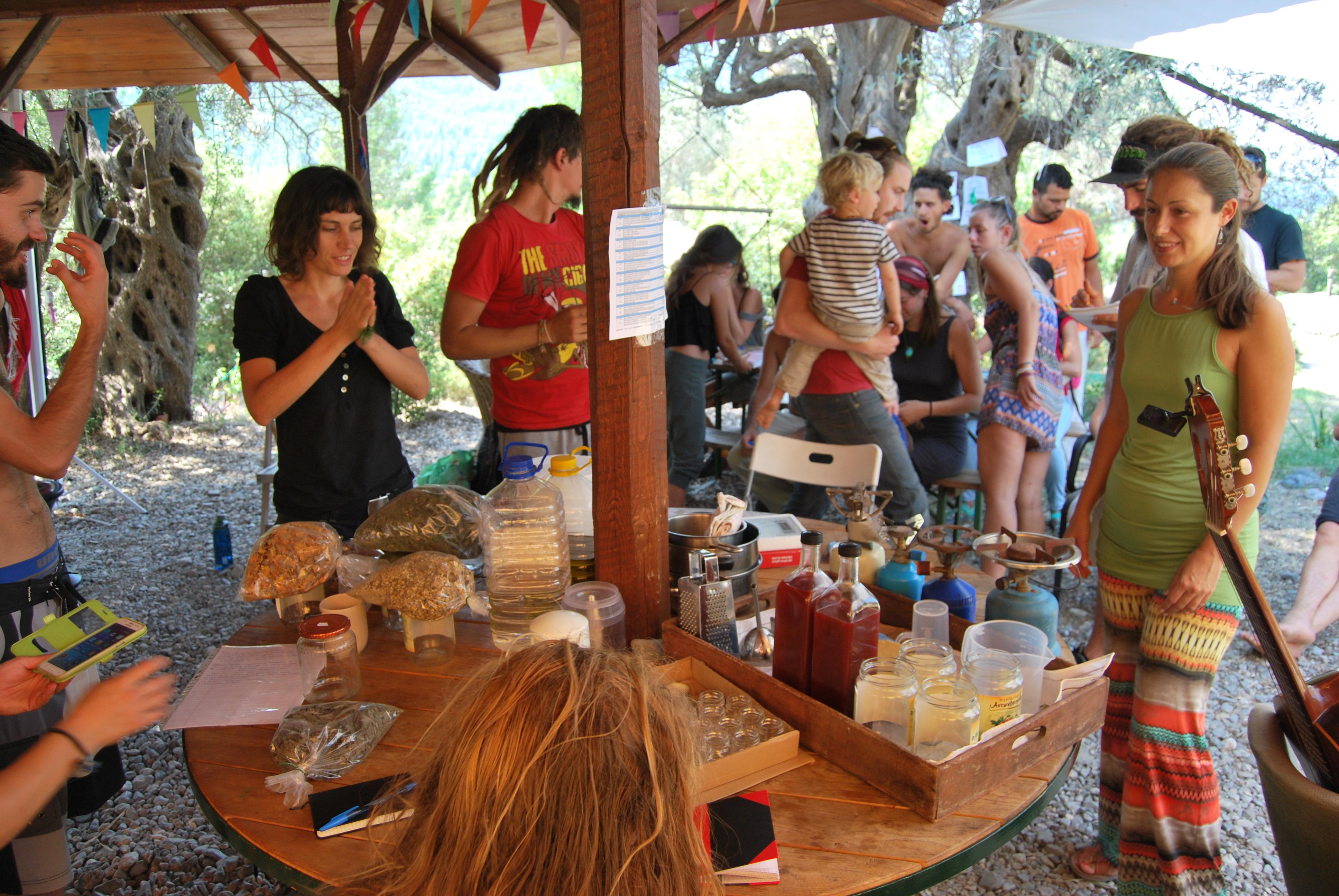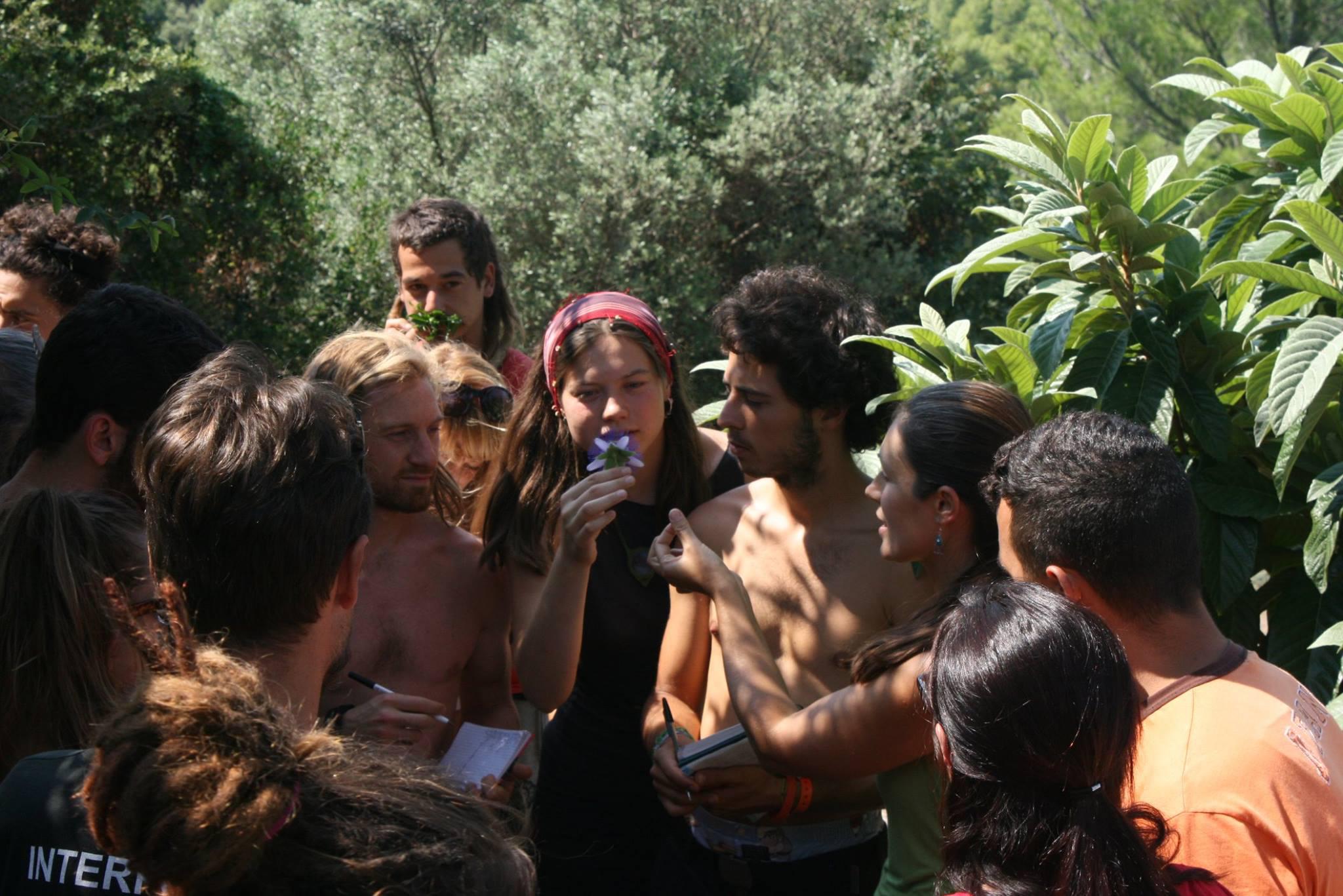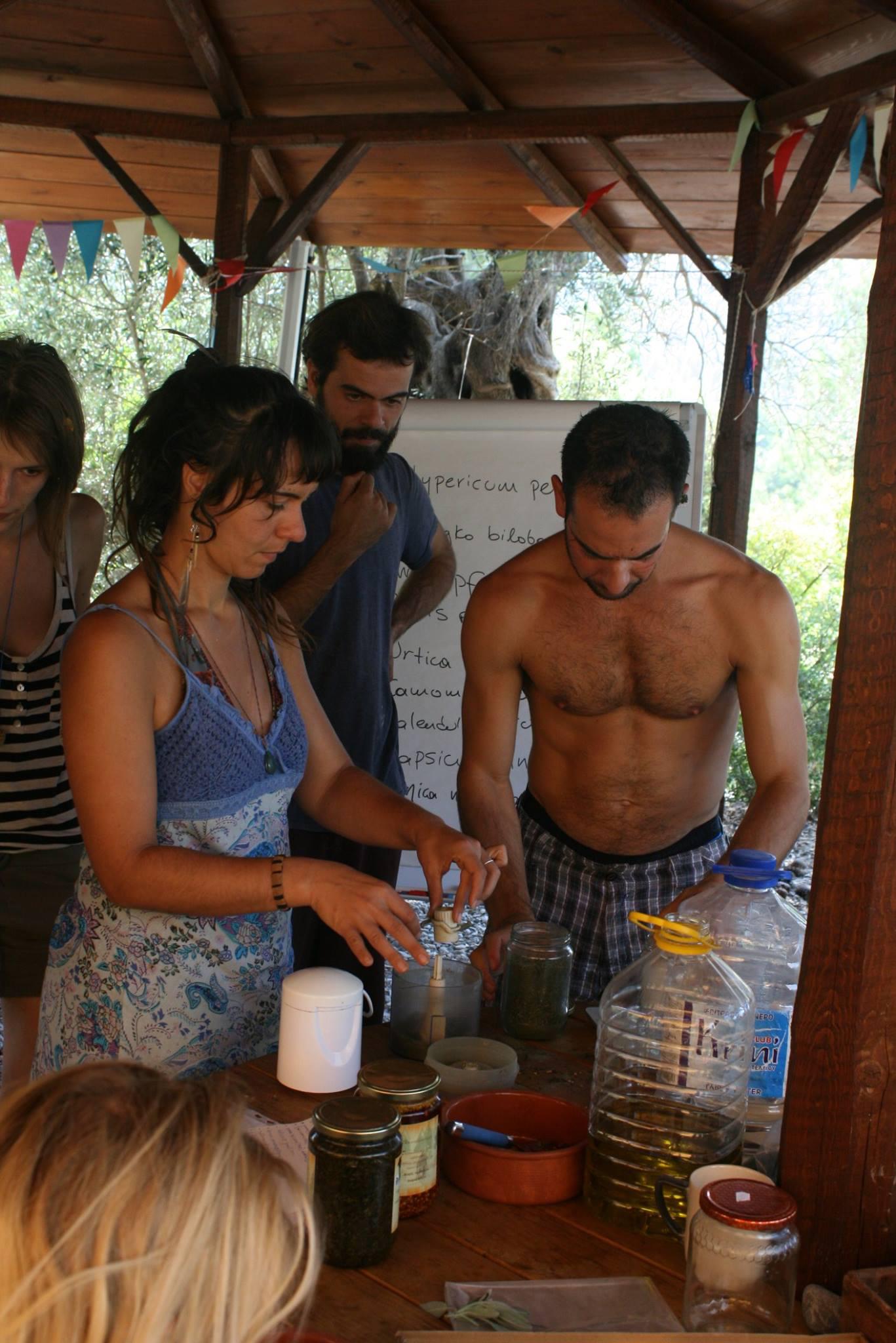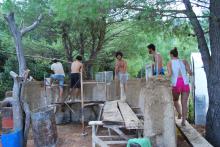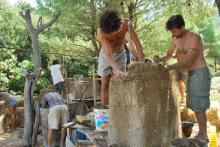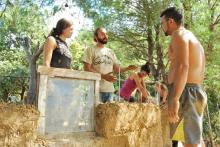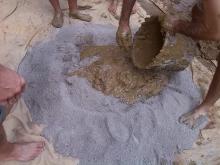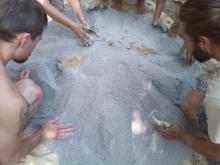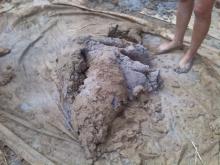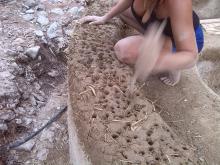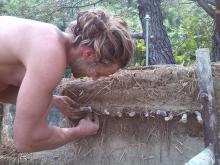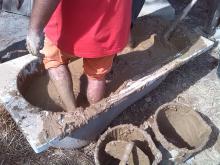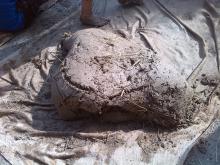Day 5. has been very sunny, hence perfect for a day all about energy. Kostas from Nea [AF1] Guinea, Alex from SEYN – Sustainable Energy Youth Network and Yorgos from UFiT (Urban Flat in Transition) presented various aspects regarding energy combining theory and practice.
An overview of various systems set ups was initially presented based on DIY wind turbines, solar, hydro, hybrid systems and solar pumps installed by Nea Guinea in various locations in Greece and abroad. In order all participants understand how they can use an off grid system, each different component of a typical off grid energy system was described such as solar panels or wind turbine, chargers, batteries, inverters, dumb loads and more.
Following the basic theory, Yorgos presented a different solar dehydrator in the location and then participants were invited to design a typical off grid system, by estimating their consumption, sizing the needed battery banks and choosing the equipment needed. In parallel, a group of participants collectively built the frame to support the solar panels, installed the solar panels and prepared all the equipment for assembly. In the end of the design session, all participants were trained into actually connecting all different parts together and got a hands on experience from design to installation of this 800W off grid system.
The education methods used were a combination of traditional approach through presentations and explaining the theory behind an off grid energy system and innovative ones through designing and installing a real system on location where everyone could see all stages of installation and operation through a highly interactive session with all trainers.
In the afternoon, all teams moved to the nearby beach called Gionati, to both get some fun time swimming and enjoying the natural beauties of the area but also collectively clean the beach with great energy and smile. In this way, they supported the local community and environment in a practical way. 15 bags of trash were collected and transport for few kilometres through the beautiful paths to be properly disposed.
This long day full of knowledge, practice and fun was completed by a great Portuguese themed night where apart from having the chance to taste delicious Portuguese flavours. We tasted “tremocos” (lupin), vegetables “a bras” with tomatoes and onion salad, “migas” wih vegetarian choricos and “arroz doce” (sweet rice) for dessert. Our Portuguese comrades presented also the current struggles against fracking plans on Portuguese coasts and also discussions were held about the various social movements and crisis.
The night closed with our incredible singer from Lithuania, Ugne, sharing with all a great traditional “farmer’s” song, which we all sung in a circle under the moonlight, strengthening the community feeling and energy for the next beautiful day.
[AF1]Write some about the organisations
Modern life produces unbelievable amounts of waste. We all know about recycling, but another valuable way to reduce waste is to compost organic material, and turn it into valuable rich soil. Fruit and vegetable scraps, lawn clippings, tree prunings, dried leaves, animal manure, coffee grounds, egg shells, and much more can be seen not as waste, but as valuable resources. Especially in areas with soil erosion, compost is a great way to kickstart regenerating soils and building more complex ecosystems. Today, we learned the theory and practice of composting.
Composting is a simple skill that anyone can do. Depending where you live – whether it’s in an urban appartment or on a farm – there are different techniques you can use to compost plant materials and animal waste. We learned how to make a cubic meter hot compost pile that, with some maintenance, will decompose into soil in only 4 weeks. In untended nature, the same processes of decomposition take 6 months to a year. Our compost pile was built over a shallow hole lined with branches to let the pile drain and so it won’t rot. We then layered carbon rich brown material like straw and dried leaves with nitrogen rich green material like kitchen scraps and weeds pulled from the garden. It’s important not to put fatty or fried foods, dairy or meat, since the oils will block the air flow, and rodents are attracted to these foods. With the proper ratio between carbon and nitrogen, the proper moisture level and oxygen flow, microbial life will work quickly and efficiently to break down all the organic material, heating the pile to over 65 degrees celcius in the process!
We learned how to build the most effective pile, how to maintain it, and how to troubleshoot problems. The 30 of us worked together, pulling weeds, wetting straw, and layering the pile. We saw how composting is an easy way for individuals, families, and farmers to help the land recover from exploitative chemical-based industrial agriculture, which destroys soils and kills the life in them. Building compost is a simple and manageable way to regernate soils and create healthier, organic food. Even cement urban areas can grow food in pots, on rooftops, in gardens, etc, using compost as the soil. Fertilizers are made in destructive ways, contain only several elements, and are devoid of life. Compost provides more benefits to plants and insects, creates stronger and more complex biological communities, and is a living community in which diverse life continues to grow and reproduce itself. All we have to do is give it a good start, by changing the way we think about waste.
After a productive morning of composting and a healthy lunch, about 20 of us embarked on an afternoon walk to the nearby town of Vlachia for some beer on a patio overlooking the beautiful Agean Sea. From there, we walked 3km down the winding paved road to a beach. Only one car passed us. A few locals were resting at the small food stand or on the black stone beach. We camped out on the far side and swam out to some rocks protruding from the water. It was a silly afternoon of diving, international swim competition, campfire, and exploring the coast. It was dark by the time we left the beach stand and walked home under the light of the full moon. A delicious Croatian dinner awaited us at our camp: root vegetable stew, “popetchki” (vegetable fritters) and salad, with “buchnica” and “shtrukli” (pumpkin and cheese pasteries) for dessert. After all the bellies were filled, the musically inclined played into the night while others laughed and played clapping games and other circle games.
Self Management of Health / Natural Remedies and Herbs
workshop by Fatini from Nea Guinea (www.neaguinea.org)
First, we started with a brief introduction about practices of self management of health and natural medicines throughout human history, their role on human lifestyle and how we ended up losing, with modern medicine, most of the ancient knowledge about this subject.
When talking about herbal remedies, what we are interested in are several different plant species, especially the ones which contain particular active principles that interact beneficially with our organism (with detoxifing properties, calming, nervous tonics, etc etc..)
Regarding the herbs, we can use them either fresh, keeping the full healing potential, or dry with increased concentration of the active subtances. (Tip: we should pay attention to the lifestage of the plant that we are harvesting (flowering, vegetative growth), as well as the time of the day we harvest (before the sunrise for more active effects))
Herbs should be dried in the shortest timeframe possible, in order to preserve the most principles, in a dark, well ventilated room. (Tip: when buying dried plant, we should look for material that looks as similar as the fresh plant)
Three different extraction methods were presented:
Water: the universal solvent. You can either make infusions (like a regular cup of tea) or decoction (let the solution boil for 10 to 30 minutes). Water extractions have a short lifespan and should be consumed within 24h after preparation. When working with fresh plant material, we should use an average ratio of 1:10 (plant/water weight), whereas with dry we should use a 1:25 ratio.
Alcohol: great to extract volatiles, pigments and alkaloids. We should always use high volume ethyl alcohol (96*), either pure or dilluted in water, when preparing the tinctures. For different plant species and extracted substances we should consider different alcohol volume solutions. The tictures are very concentrated and can last for more than 1 year after preparation. Considering the ratios for extraction, we should work with a 1:2 weight ratio for fresh material and a 1:4 for dry herbs. The tinctures should be prepared in closed glass jars, with constant mixing and they will be ready in 2 – 3 weeks time.
Oil: in this case we should always consider the properties of the oil solvent we are using (there are “heavier” oils, like olive or coconut oil, and “lighter”, more sensitive oils like sunflower or sesame oil). The oils are organic solvents and they are subject to their own degradation processes, through metal, air and sunlight oxidation. There are three main oil extraction methods: Cold extractions – they take a longer extraction time but they also retain most of the oil natural properties and are able to last longer; Sun extractions – we prepare the oil in a closed ,air tight container and leave it sitting for a month in the sun, but avoiding the light to enter the jar, in order to slowly heat the oil and accelerate the extraction; Hot water bath (Bain Marie) - the most aggressive extraction but also the fastest. We place the jars with the oil covered herbs in a pot with boiling water and leave it for around 30min to 2 hours extracting. The result will be a concentrated preparation that can be immediately used.
After discussing the theory of extractions, we took a tour around the gardens to see some examples of the kind of medicinal plants growing in the property and what are their main uses (Rosemary, Calendula, Clary Sage, Passiflora, Jasmin, …). After this small walk we had time to actually prepare some of these extractions using different methods. We prepared oils from chilli pepper, calendula, and a tincture from arnica.
For more information on plant uses and cultivation: www.pfaf.org
Eco building is matter of priorities. Living in the countryside allows you to be in contact with the materials that surround you, materials that you can transform into a structure. What’s the perfect house? The one in which you like everything you look at, where there is no need to hide any material because you love it all, like your own skin. Choosing materials is more than just rationalizing which physical properties you desire, like insulation or strength; it is a choice of what inspires you, of what sustains or feeds you. Personal sustenance is part of sustainability. This is the eco building philosophy of the Stagones builders.
Today we worked with cob – a natural construction material of clay, sand, and straw. We mixed the clay with our feet in a tub of water, feeling the soft clay squeeze between our toes, noticing how much water it absorbed, how it dried to our skin. This is part of what it means to understand the building materials: to be sensually connected with them and thus better understand their characteristics. We mixed this clay with sand and water, by stomping our bare feet, and rolling the mixture over a tarp. Then, we stomped in the straw. By exploring the material with our fingers, hands, and feet – by shaping it, throwing it, dropping it – we learned what was the perfect consistency, texture, and moisture level.
This building method is low cost but labor intensive, and is best done by a small team of people. Together we worked to continue building the wall of an outdoor community kitchen that will serve future workshops and gatherings at Iliosporoi and Stagones. We added the cob to the wall with our hands, with simple hand-crafted tools, and “strumenti di fortuna”. While many of us had no building experience, working closely together with the supportive and very encouraging trainers, we were able to quickly learn the technique and build up the wall. One day was not enough to finish the construction, but we will all remember that part of this community kitchen was built by our hands (and feet!). We hope to come back next year and share a meal in the final result.
That night, the cultural night hosted by the Spanish group started with the projection of a short film from the Canary Islands. This short was about the conquest of the Islands by the Spanish kingdom and how the aboriginals struggled to fight against them until they were defeated. After this cultural introduction, dinner was ready, and we had the opportunity to taste a few dishes with different flavours and textures, giving us a picture of their mixed culture. We tasted an arid place with sweet people who like to cook with palm honey, bananas and guava, and, on the other hand, they shared spicy sauces, strong goat cheese and sugar cane rum to lighten up the event.
Beyond that, the night brought us not just a little piece of Canary Island gastronomy but also an artisanal clay pin that will travel back home with each one of us.
- 63708 Aufrufe
